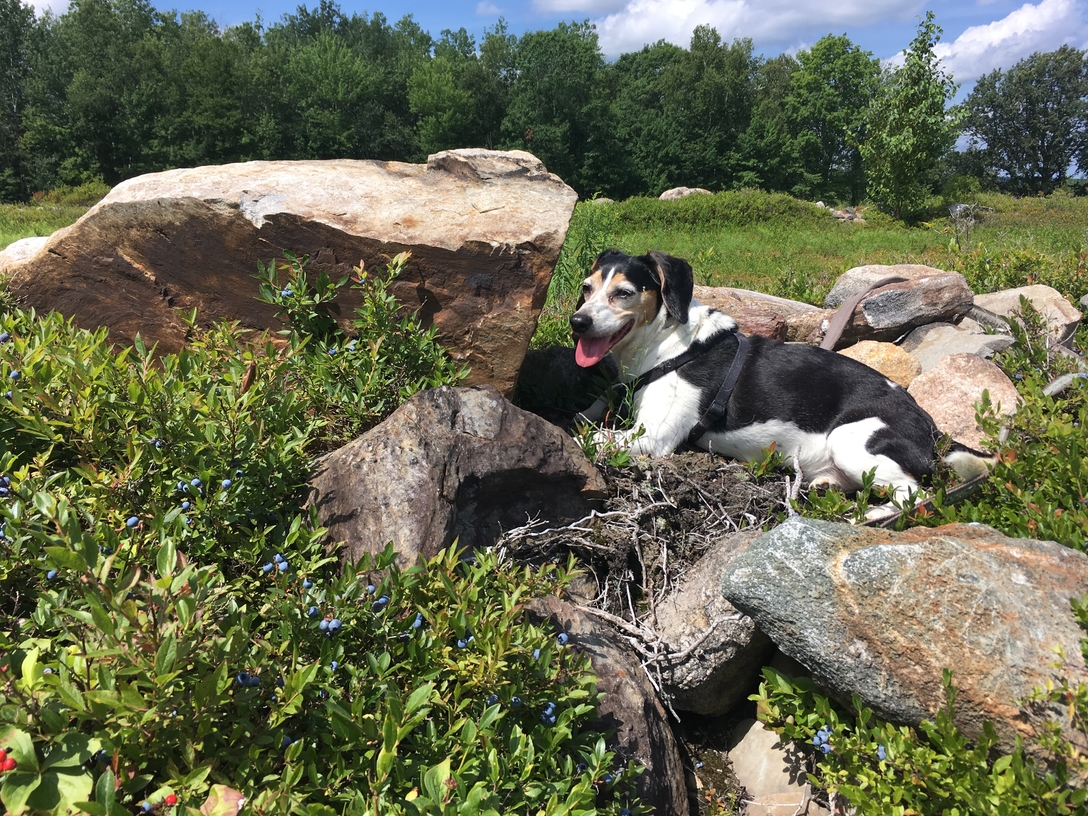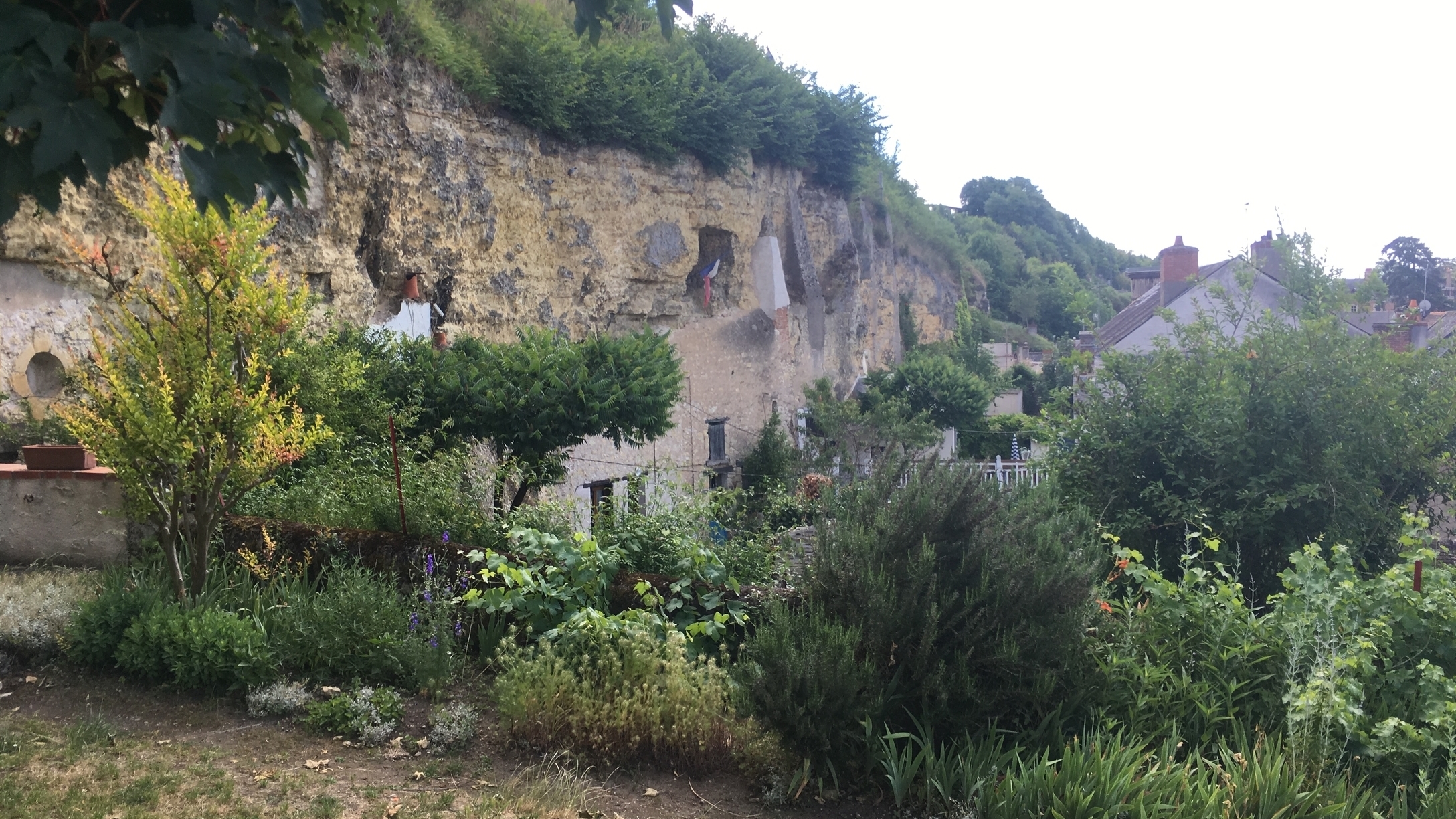2016 Ewing Fruit Project
In towns along France’s Loire Valley, some people still live in medieval-era homes that were carved into bluffs of soft white limestone that eroded away centuries ago, when the valley’s rivers ran a different course. The stone itself, called tuffeau, is shot through with marine fossils, relics of the sea that covered this part of France some 90 million years ago.
The limestone, along with the softball-sized hunks of glassy flint and other specific rocky soils that make up the bedrock of the region, are part of what make it famous for wine. Up and down the valley are wine-growing regions you may have encountered as names on bottle labels: Touraine, Anjou, Saumur, Chinon, Vouvray. By law, each grows a few specific grapes, and those grapes are considered best suited to the soil the vines are rooted in. The expression of this combination of grape and ground is what’s called terroir.
In the purest (or perhaps most nativist) sense of the word, terroir is only the combination of a specific place and a specific grape—the grape that, over the centuries, has become specifically adapted to the soil and climate of the region it originated in. It’s why Burgundy is called Burgundy and not pinot noir; you can make Burgundy the wine only in Burgundy the place. It’s why Sancerre tastes like Sancerre—like licking a piece of that Loire flint—and not like every other sauvignon blanc.
There is no comparable tradition in American wine, which is as old as the colonies on the East Coast and the mission system out west. Native species of grapes are found around the United States, but despite efforts predating the American Revolution, none have succeeded in becoming a wine grape in any widely accepted manner. So in domestic vineyards European grapes—Vitis vinifera varieties—are the vehicle for American terroirs. Before the 1970s, the US wine industry was dominated by simulacra, with cheap bottles labeled “champagne” and “burgundy” made from grapes grown far away from the specific soil and climate of the places such wines take their names from. While that practice is now illegal, high-end vineyards will still go to great lengths to convince customers that the soils in Napa or Sonoma are just like those found in a certain corner of Bordeaux—as is supposedly the case with Rupert Murdoch’s vineyard, Moraga Vineyards.
Even when US vineyards aren’t mimicking the terroir of their famous French counterparts, the combination of vinifera grapes and American soil has produced “great” wines comparable to those made to the more legally and culturally rigid standards of France and other European countries. It may be romantic to think of wines made from local grapes in the local soils they’ve grown in forever—or the closest proximity to it—as pure expressions of a wine, a culture, a place, but that’s ultimately a limiting way to look at wine, and by extension, the world. But as someone who loves both wine and nature, I find the idea of drinking something that is both expressive of a place and more specifically of that place really compelling. And that is how I, a professed wine snob, came to love one of the most easily derided types of “wine” you could ever come across: fruit wine.
Wine is made from grapes, and grapes are fruit, but wine is not called fruit wine because calling something fruit wine is a way of saying that it is bad—that it is not True Wine, Wine with Terroir. And generally speaking, this is true. Just think of the last time you drank Boone’s Farm. It’s bad! But apparently not by necessity.
Before I tell you about the good fruit wine, I want to tell you about how glaciation created the landscape that surrounds my house in midcoast Maine. A frozen slab several thousand feet thick called the Laurentide Ice Sheet scraped its way across southern Quebec and New England some 35,000 years ago, its weight and flow completely remaking the landscape that existed before the glacier spread over the region. The flow of the ice sheet, followed by the runoff caused by its melting, distributed large expanses of stone, sand, gravel, and boulders across its path—some carried from hundreds of miles away before being deposited. This “soil,” called glacial till, is nothing like the dirt you might find under a lawn or in a garden bed—or a vineyard, for that matter. It’s rock, a lot of it granite, in varied shapes and sizes ranging from ground-down specks like sand to glacial erratics that can reach 20 or more feet in height. With its low fertility and high acidity, it’s so inhospitable to plant life—and to farming—that large areas of glacial till are called barrens.

But one plant figured out how to eke out an existence in the stony expanses the glacier left behind: blueberries, which along with cranberries are among the few indigenous fruits that are farmed commercially in the United States.
Maine’s managed blueberry barrens—that’s the term, managed, as they aren’t exactly farmed in the traditional sense of the word—produce nearly all of the domestic “wild” blueberry harvest, and just as they do with lobster, Maine restaurants and food companies like to put blueberries in just about everything—including wine. But like most fruit wines, these blueberry wines are often cloying. That is not the case with Oyster River Winegrowers’ Ewing Fruit Project, a slightly fizzy wine made solely from wild blueberries, with nothing else added at all. Does it taste like walking out of the woods and onto the barren on an August day, the fern- and mushroom-covered floor giving way to hot granite and ripening berries mixed with the scent of the wildflowers? Not exactly. Maybe it’s something particular about vinifera that makes grapes grown in flint produce wine that tastes like stone. But the blueberry wine is delicious: dry, funky, and slightly savory. It’s Maine terroir, and it’s good terroir.





